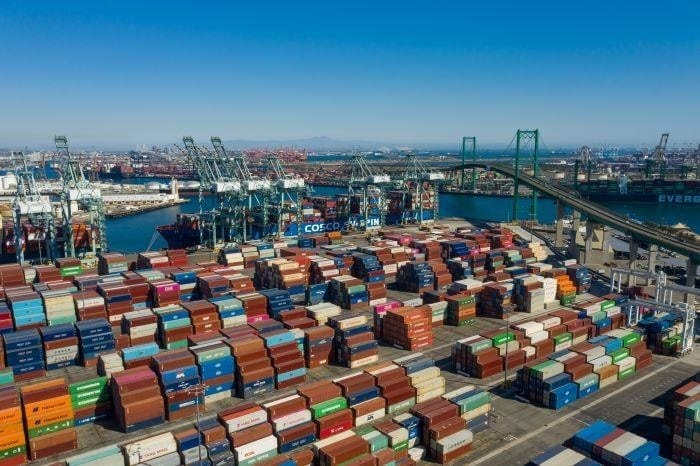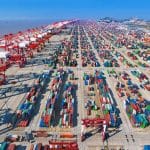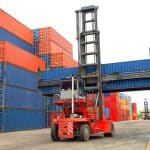PORT AUTOMATION DEBATE FLARES AHEAD OF USWC LABOR TALKS

The temperature around terminal automation — long anticipated to be the most contentious issue in upcoming West Coast longshore labor talks — is heating up on the eve of the launch of formal negotiations.Diametrically opposed views of management and labor as to the use of automated cargo handling equipment at US West Coast ports have emerged in a series of statements in recent weeks that, taken together, show this: how a substantial change made in the 2008 contract — allowing automation — that was signed with little disruption has evolved since then into a philosophical clash whose potential to disrupt this year’s negotiations has led to the diversion of tens of thousands of containers to East and Gulf coast ports in recent months. No one knows, or is willing to predict, the extent to which disruption will accompany the upcoming talks, if at all. The all-time record profits earned during the pandemic by the container lines, which dominate the Pacific Maritime Association (PMA) board, provide an ample war chest to fund a significant expansion in pay and benefits that could enable both sides to get a deal while sidestepping volatile issues such as automation. The talks, which begin Tuesday in San Francisco, will also take place under the watchful eye of Biden Administration officials who see continued port disruption and its impact on inflation as a major political liability ahead of the midterm elections later this year. Just over a week before the start of those talks, the PMA on May 2 released a study noting that automation “will figure prominently in coming labor talks” with the International Longshore & Warehouse Union (ILWU). The study sought to highlight the PMA’s main point that only through automation will it be possible to expand capacity of marine terminals at ports such as Los Angeles and Long
Beach that, due to their urban location, can’t be physically enlarged. “With virtually no potential to expand, the principal strategy to accommodate higher volume must be densification — or increasing container capacity on the existing port footprint,” said the study, pointing out that throughput per acre at the two automated terminals in Southern California
— TraPac at Los Angeles and Long Beach Container Terminal — has been 44 percent higher on average than at non-automated facilities. “The dense pack you achieve with an automated facility is really quite amazing,” PMA President Jim McKenna said during a press conference Friday at the Port of Los Angeles. “The reality of the situation is that these facilities are in urban areas. There is no room to expand the facilities themselves, so you need to go up.
Automation gets you the ability to handle more in a single terminal.”
“Some of these shipping companies are…attempting to automate the US terminals they lease using robots instead of American workers to operate the heavy equipment that moves cargo,” Adams wrote. “Other ports have tried this and found that automation not only kills good jobs but does not move more cargo. In addition to a loss of jobs, automation poses a great national security risk as it places our ports at risk of being hacked as other automated ports have experienced.” “Container volume has increased at the automated terminals, but this has been at the expense of other terminals that have had an offsetting drop in container volumes,” he said. “The increased productivity that the PMA is claiming at the two automated terminals has meant less work at other terminals and an overall loss of employment for longshore workers.”
PMA SEES NO BIG HURDLES AHEAD OF ILWU CONTRACT TALKS

With the start of critical contract talks just days away, the main negotiator representing US West Coast longshore employers Friday struck an upbeat tone on management and workers keeping cargo flowing during the talks, saying the two sides are on good terms after cooperating during the pandemic-linked cargo surge. But on the contentious issue of automation, James McKenna, the president and chief executive of the Pacific Maritime Association (PMA), did defend it as a key tool that marine terminals will need to adopt to handle more containers. Yet he assured longshore workers that automation can benefit both sides. McKenna said wages, hours, and working conditions were central to negotiations. negotiations would begin on Tuesday, two days earlier than the originally scheduled date of May 12. “Talks are scheduled to continue on a daily basis in San Francisco until an agreement is reached,” the statements read. “…Both sides say they expect cargo to keep moving until an agreement is reached.”
HIRING SURGE POINTS TO STRONG US TRUCKING DEMAND
A strong increase in US trucking employment last month indicates freight demand remained high and for-hire trucking firms were confident enough to keep adding to payrolls, despite a rapid decline in spot market pricing. Trucking companies tracked by the US Bureau of Labor Statistics (BLS) added 14,100 jobs in April, according to unadjusted data released by the agency Friday, a substantial increase over the 9,000 jobs added in April 2021.That’s a reassuring sign that demand for freight beyond the truckload spot market did not collapse in April. The new hires were needed to haul freight that continues to land at US ports and leave factories and warehouses, amid ongoing labor shortages and supply chain disruption.
TRUCKING’S BIG SWING
The seasonally adjusted employment gain was only slightly less than the actual jump in job numbers, showing a 13,000 increase in trucking employees. Seasonal adjustments are made to even out periodic swings attributed to seasonality and may reflect long-term trends but not actual job numbers, especially in volatile markets. Trucking is a highly seasonal market, with big swings between fall and spring.Warehousing also is a highly seasonal market, and April saw actual warehousing employment drop by 8,500 jobs in a tight labor market. Unadjusted courier job numbers fell by 39,800. Both sectors saw seasonally adjusted increases, however. That’s because the decrease in unemployment for both sectors was less than expected, said Jason Miller, associate logistics professor at Michigan State University.
CONTAINER SHIPPERS POOLING CARGO TO CHARTER BREAKBULK SHIPS
It was the first dip into the breakbulk industry for some logistics managers, looking for new ways to secure capacity while still wrestling with unfamiliar acronyms and terms. Others, such as a major pharmaceutical importer and an agricultural exporter, had already gotten their breakbulk feet wet and were looking for other shippers to charter breakbulk capacity with. The presence at the conference of at least nine container shippers of the 100 total shippers in attendance shows that even while global container volume is slowing and carriers begin adjusting capacity in kind, plenty of logistics managers are concerned enough about future capacity on US trades. Global container volumes in March shrank 2.9 percent, according to the latest data from Container Trade Statistics, while the idle fleet hit its highest level in two years, according to maritime analyst Alphaliner.
SHIPPERS ‘NEED TO BE CREATIVE’
The degree to which conventional container shippers are entering the breakbulk market shows the new scale of creativity required in a market where container lines are often loath to expand annual contracted capacity allocations — and a delayed shipment risks a lost sale or stalled factory production. Still, breakbulk shipping is no wonder cure. Beyond requiring additional insurance, containers often must be secured with chains on non-cellular ships, increasing risk as well as loading and discharge time. The breakbulk fleet, a small segment of global shipping, can only provide a limited amount of additional capacity and typically operates on a tramp — rather than a scheduled — basis, although shippers depending on container lines could point to scratch-the-bottom liner ocean reliability as not overwhelmingly better.Just as container shippers try to make sense of parceling (one shipper’s piece of a multi-customer charter) and mafis (a wheeled trailer for roll-on, roll-off cargoes), the chartering of smaller breakbulk vessels for container shippers has contributed to rising prices. A forecast of daily charter rates for an in-demand type of multipurpose vessels (MPV) — 12,500 dwt ships with lift capacities from 240 mt to 360 mt — soared 181 percent year over year in April. Daily charter rates within that period and for that type of MPV swung from $8,092 to $22,764.




